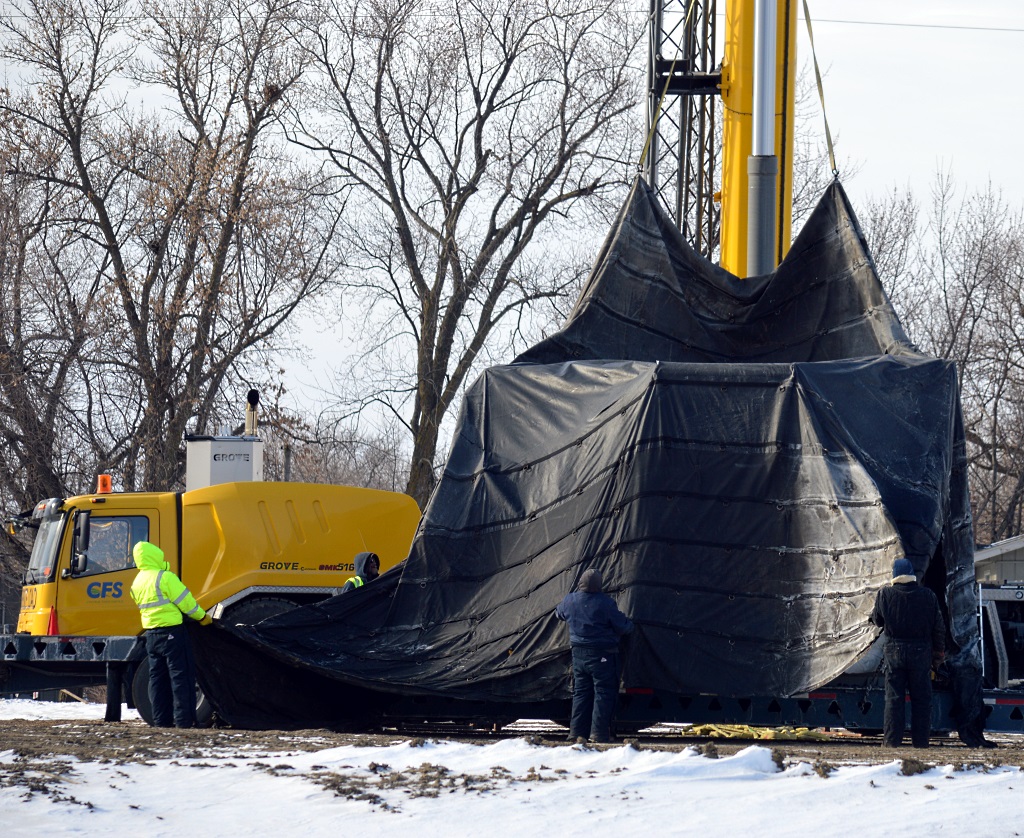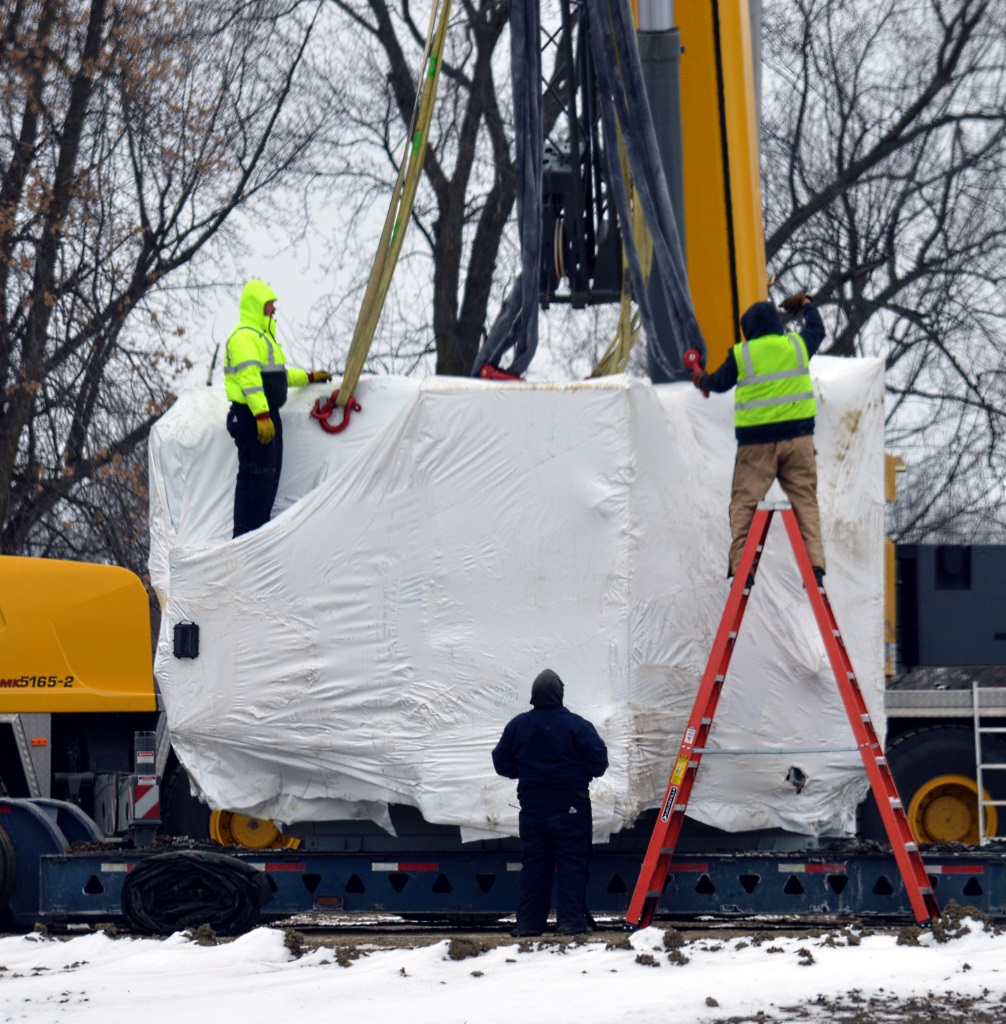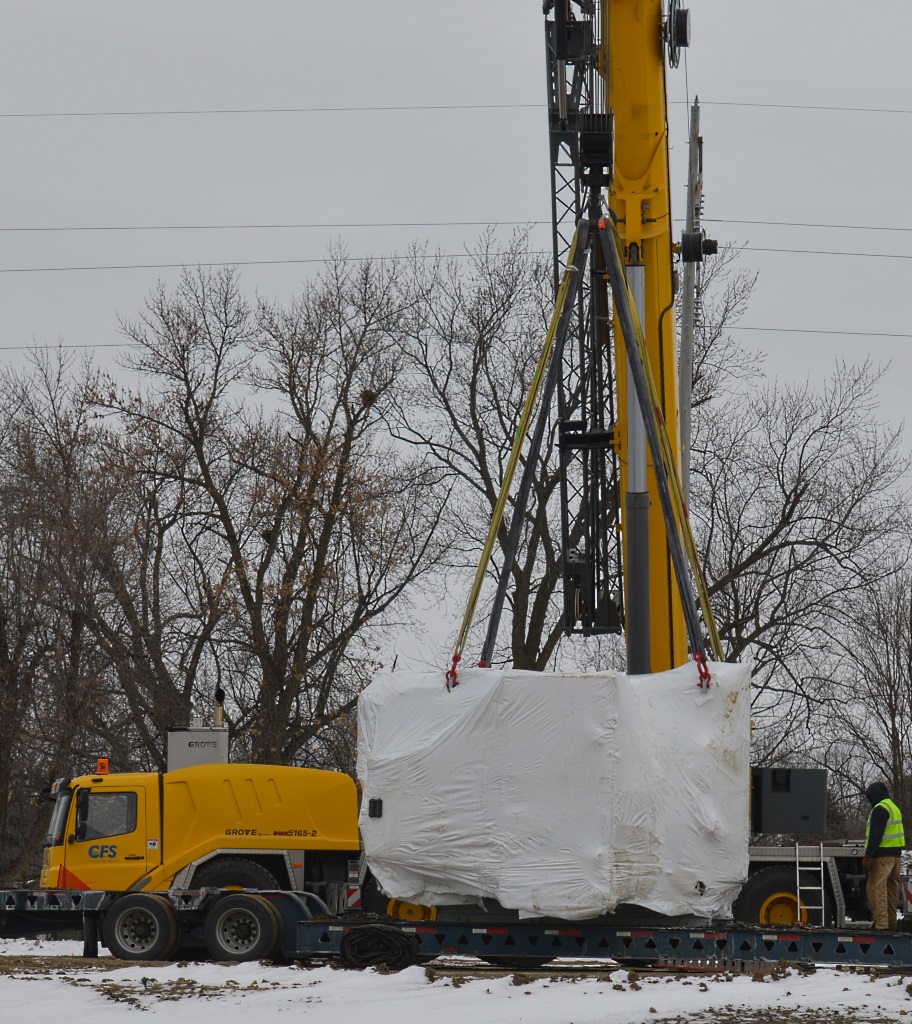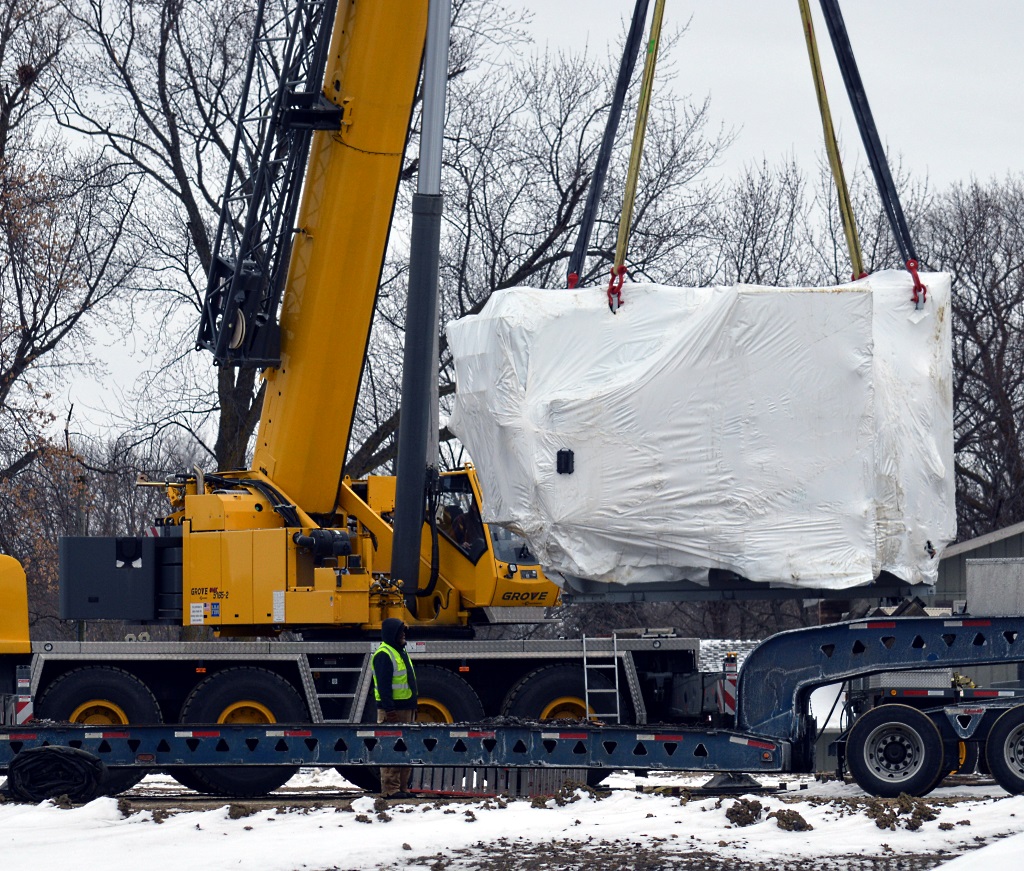45-ton transformer for Mountain Lake’s new substation comes to town
There is a new electrical connection in town.
The 45-ton 10/14 MVA transformer, the major component for the City of Mountain Lake’s new sub-station, located northeast of the Cottonwood County Road #1 and 1st Avenue intersection, arrived at the site via tractor-trailer from its manufacturer in Louisville, Ohio, on Friday, January 13. It will stored there until weather conditions allow for construction to be completed.
The transformer was built by OTC Services at a cost of $439,088.46 (Minnesota sales tax included).
A crane from CFS (Central Farm Service) was on hand to transfer the heavy load from the semi-trailer to its repository on site.
Megavolt amperes (MVA) power is a unit used for measuring apparent power. The apparent power refers to the total current and voltage in an electrical circuit. The term is preferred in descriptions of total electrical power in installations, and it captures both true and reactive power in an electrical circuit. It is the common rating used in major electrical installations, such as transformers and generators.
Megavolt amperes are calculated using other derivatives, such as kilovolt amperes. One thousand kilowatt amperes are equal to one megawatt ampere. When installing power generators and transformers in an electric power substation, engineers always consider the substation’s capacity; thus, they install generators and transformers with similar MVA power capacities. Additionally, MVA power is used as a basis for estimating the amount of electrical power that an industry or residential area requires, which should match the MVA power capacity at the substation.
Different power transformers come with different MVA power ratings. Engineers determine suitability of power transformers for the purpose of obtaining a match in power transmission from the substation to industries and households. Matching MVA power capacity in transformers with the substation reduces power loss. Moreover, it results in power being well-controlled, which helps prevent incidences of power surges that result in property damage and loss of life.

























